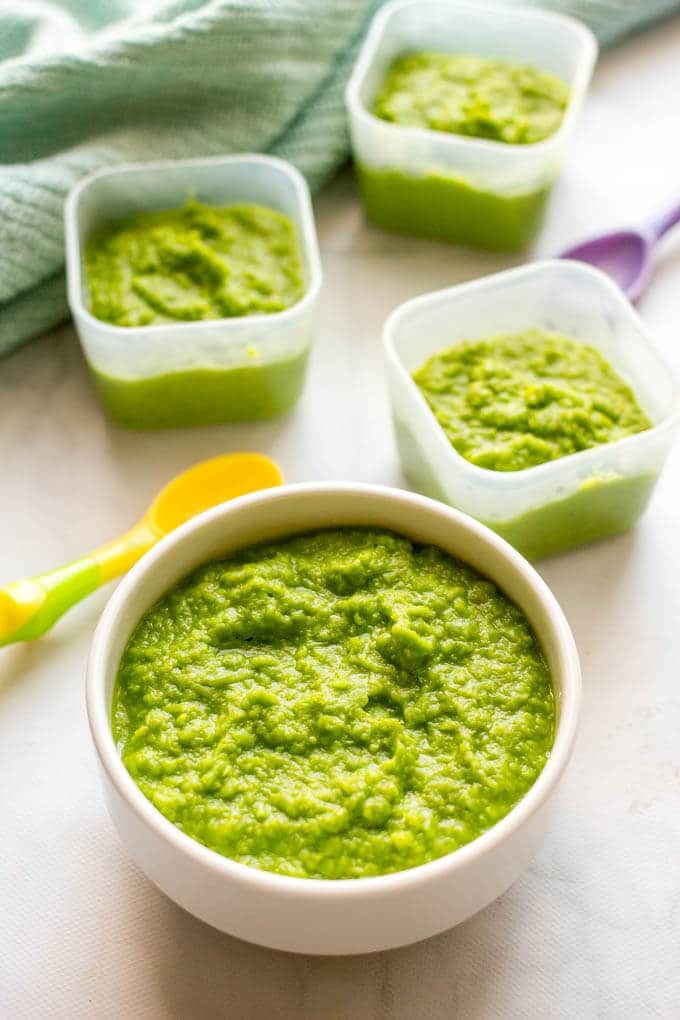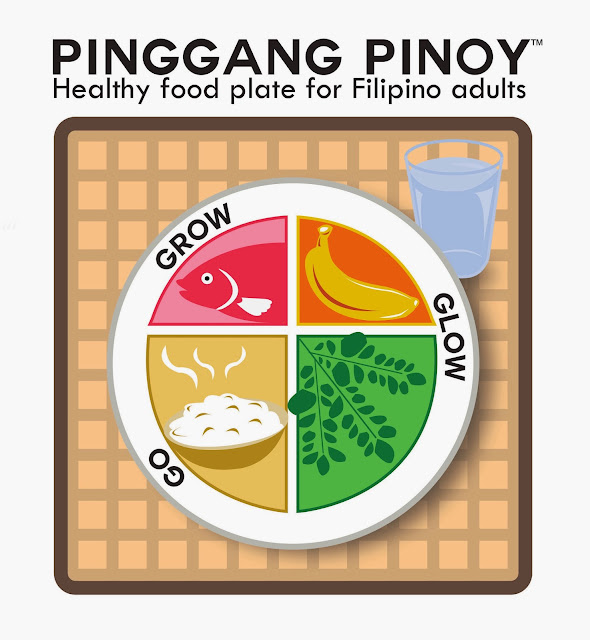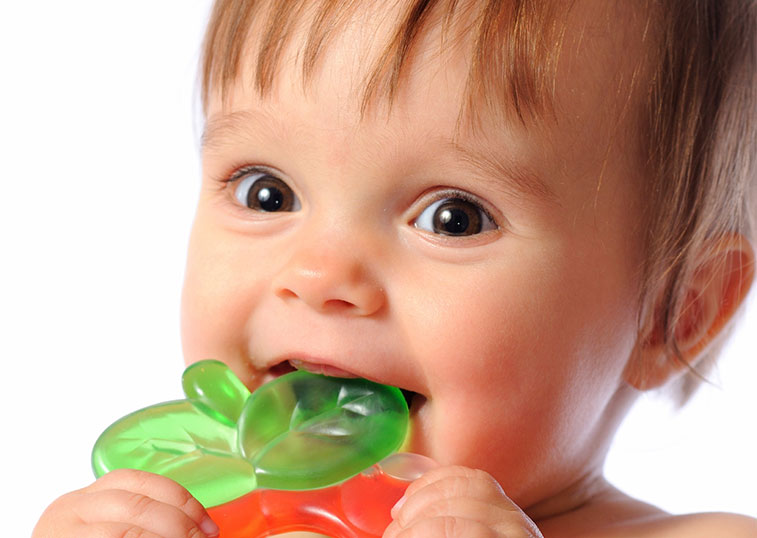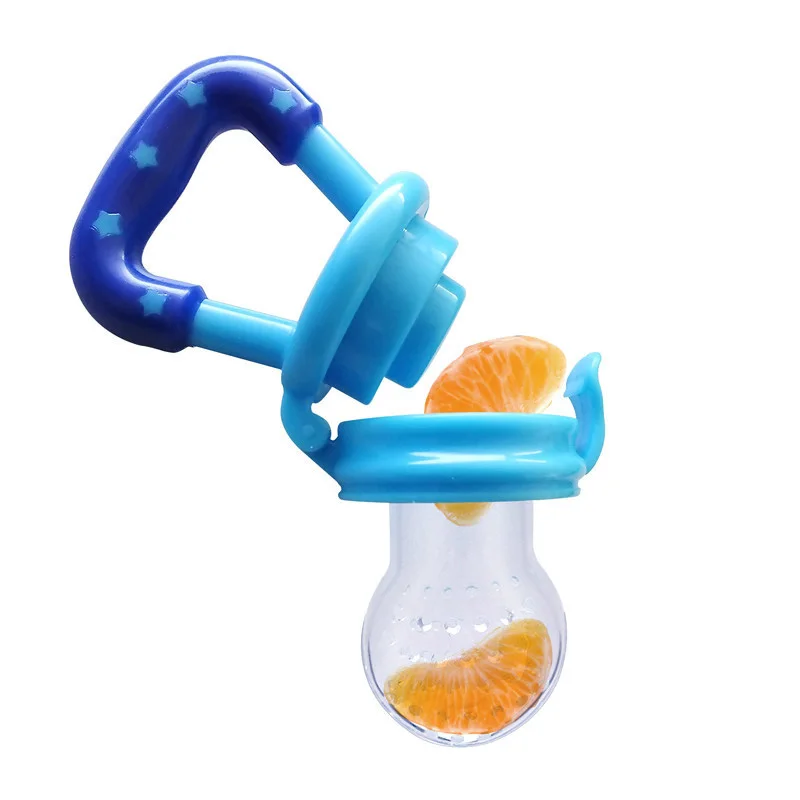Solid food baby recipes
15 Stage One Baby Food Purees (4-6 Months)
Home » Feeding Style » Baby Food Purees » Stage One » 15 Stage One Baby Food Purees
These 15 Stage One Baby Food Recipes will tempt your baby’s taste buds! These simple, homemade baby food recipes are made with nutrient-dense fruits and vegetables with an added pinch of spice that makes these purees out-of-this-world delicious! They’re great for babies 4-6+ months of age!
Medically reviewed and co-written by Jamie Johnson, Registered Dietitian Nutritionist (RDN), and Lauren Braaten, Pediatric Occupational Therapist (OT).
Stage One Baby Food PureesAre you looking to make your baby homemade purees, but don’t know where to start? Does the process intimidate you?
Then you have come to the right place! Here you will find 15 of my all-time favorite starter baby food purees that have been viewed (and made) millions of times by my readers and combined have over 400 5-star reviews!
I would also like to personally welcome you to the wonderful world of baby food, this is a fun (and yummy) club to be in.
Does your baby’s first bite need to be boring?
Of course not!
Baby’s food can (and should be) delicious from the very start!
While it may seem daunting at first, making your own baby food is super easy once you get the hang of it.
And I’m here to walk you through it every step of the way.
First time making homemade baby food? Then I suggest you start this journey by reading my in-depth Guide on How to Make Homemade Baby Food. The detailed guide goes over all the important information such as the best cooking tools to have on hand, safe storage, how to know when baby is ready for solids, how to introduce purees, the best first foods for baby, and so much more! You can also check out my best-selling cookbook for even more information and recipes!
15 Stage One Baby Puree Video
While the recipes themselves are simple, in this video I will show you how to add in a pinch of cinnamon, rosemary, curry, or mint to quickly roasted or steamed fruits and vegetables that enhance their natural flavors.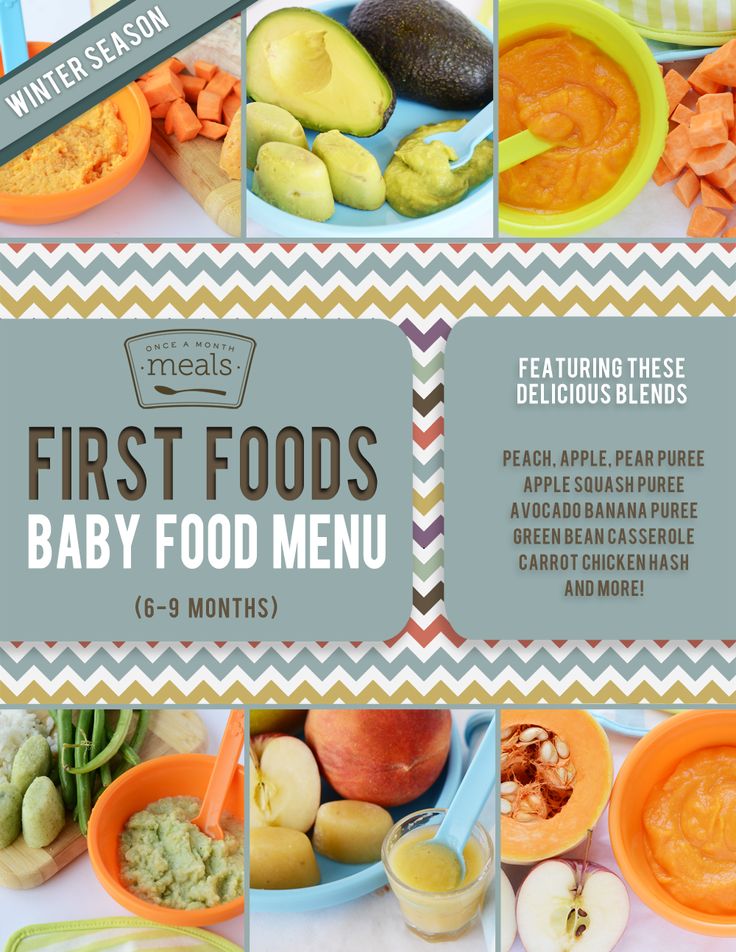 In other words, these are simple purees that I am pretty sure you will want to eat as well!
In other words, these are simple purees that I am pretty sure you will want to eat as well!
What is In Each Puree Recipe
After going through this guide, you will want to check out some (or all!) of the homemade baby food recipes below. Each recipe goes into detail about the:
- produce that is in the puree
- benefits of that produce for your baby
- recipe cooking options
- detailed photos and videos with step-by-step instructions
Reminder: The homemade baby food recipes below are made for babies that want to try the most delicious food from the very first bite! 😋
Helpful ToolsLet’s start with a few of my favorite kitchen essentials to make the best homemade baby food purees! These kitchen tools will help make the process of cooking, blending, and freezing baby food hassle-free. You can find a full list of my favorite baby and toddler food making tools in my online Shop.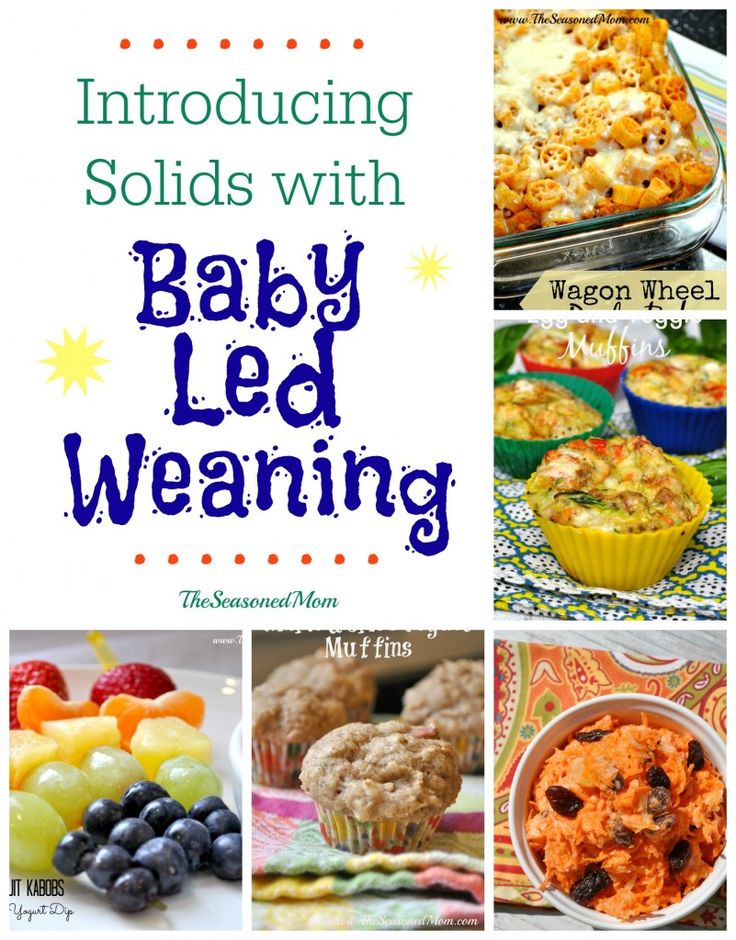
- Blender or Food Processor
- Freezer Storage Tray
- Fridge Storage Containers
- Stasher Bag
- Baking Sheet
- Steamer Basket
- Medium Saucepan
- Reusable Pouches
- High Chair
- Suction Bowl and Spoon Set
- Bib with Food Catcher
Learning Resources: looking for the best high chair, cups or spoons for your baby? Then we’ve got you covered! Here you will find How to Find the Best High Chair for Baby, an easy guide on Best First Open Cups for Baby (plus 4 tips when introducing a cup) as well as 3 Tips on How To Spoon Feed Baby (plus – our favorite spoons for purees or BLW).
Frequently Asked QuestionsCan babies have spices in their food?
Yes, yes, yes! Babies can absolutely have spices mixed into their purees from the very first bite.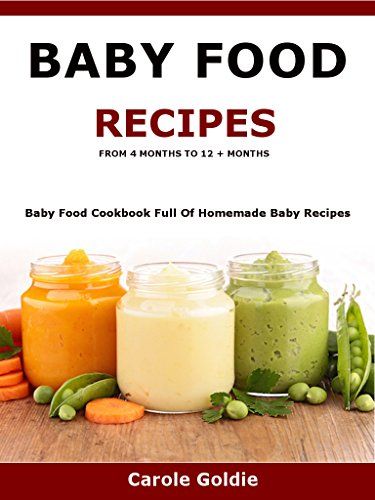 Adding a pinch of spice or herbs to a baby’s food makes it taste better and gives the food additional medicinal properties. Read more here. But as I always say — you do you! If you don’t want to add spices to your baby’s food, you can certainly leave them out. Don’t worry, I give instructions on each recipe card for both.
Adding a pinch of spice or herbs to a baby’s food makes it taste better and gives the food additional medicinal properties. Read more here. But as I always say — you do you! If you don’t want to add spices to your baby’s food, you can certainly leave them out. Don’t worry, I give instructions on each recipe card for both.
What about allergies? Can spices cause an allergic reaction?
My rule of thumb is that unless there is an immediate family member that has a true allergy to a certain spice or food, then introducing your baby to spices at the same time as new food is completely acceptable. Spice and herb allergies in babies and adults are very rare. But remember, it’s always recommended to keep an eye on your baby when introducing any new food or spices.
At what age should I start my baby on baby food purees?
When a baby can start on solid foods is determined by their own rate of development, which generally comes between 4-6 months of age.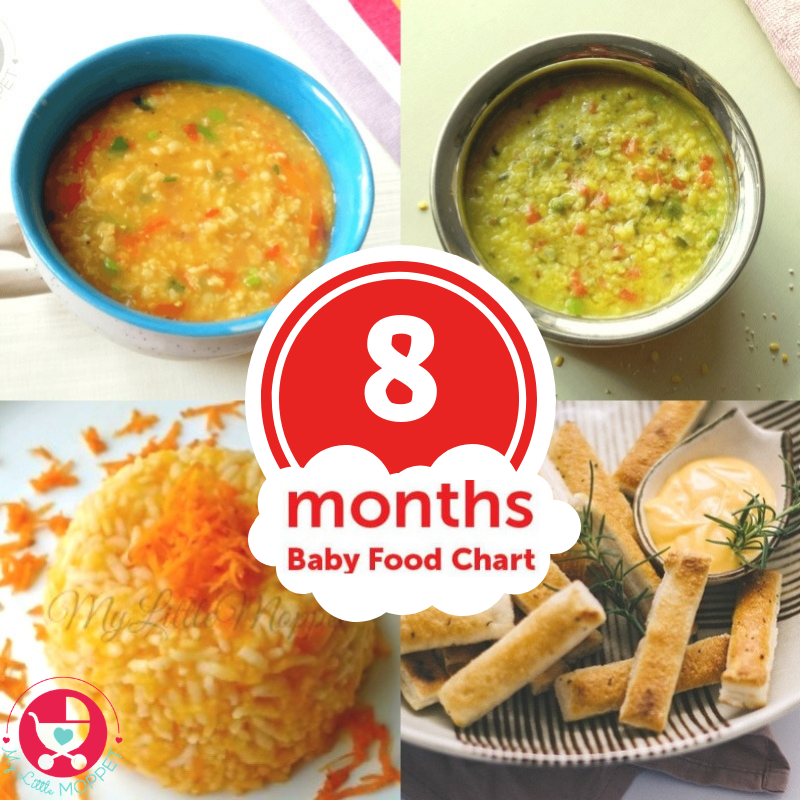 Some of the developmental milestones babies need to reach to start solids include: if your baby has solid control of their head and neck, if your baby has doubled in weight, and if your baby is reaching for or opening their mouth when you eat (see my guide here). Before you start your baby on purees, you should consult with your pediatrician to make sure your child is developmentally ready for solids.
Some of the developmental milestones babies need to reach to start solids include: if your baby has solid control of their head and neck, if your baby has doubled in weight, and if your baby is reaching for or opening their mouth when you eat (see my guide here). Before you start your baby on purees, you should consult with your pediatrician to make sure your child is developmentally ready for solids.
All of our baby food recipes are designed to enhance the natural taste of the fruits and veggies while keeping as many nutrients intact as possible. In other words, the goal is to make a puree that’s both healthy and delectable.
There are several ways you can cook baby food purees, but the main techniques I use are:
- Steaming
- Roasting
- Simmering
- Raw
Keep in mind, that as long as the produce is cooked until soft, that there isn’t a right or wrong way to cook it for baby food.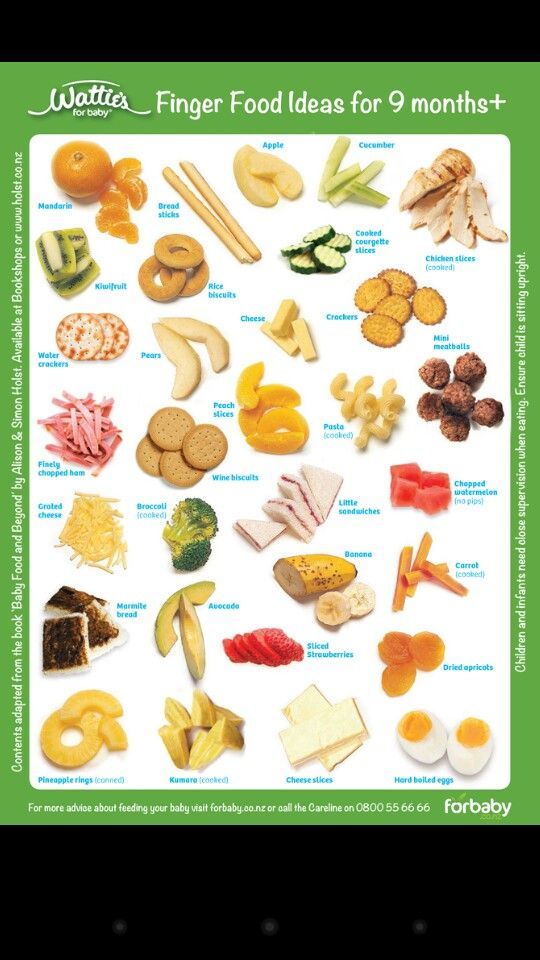
If a recipe for broccoli calls for steaming but you want to roast it because you will already be roasting some broccoli for yourself for dinner, then go ahead and roast the broccoli for your baby’s puree. Play around and have some fun with it!
Adding Spices to Baby PureesIt’s encouraged that you can serve your baby a homemade puree with a pinch of spices or herbs from the very first bite.
Benefits of Spices
- boost and compliment any fruit or vegetable puree
- broaden baby’s emerging palate
- add more flavor and depth into their foods
- decrease picky eating in the years to come
- have medicinal properties in them — they can help with digestive issues, boost brain functions, repair muscle tissues, and so on.
While each puree recipe on this site has a selection of spices or herbs that complement the flavors of the fruit or vegetable in the puree, it’s up to you if you want to add them.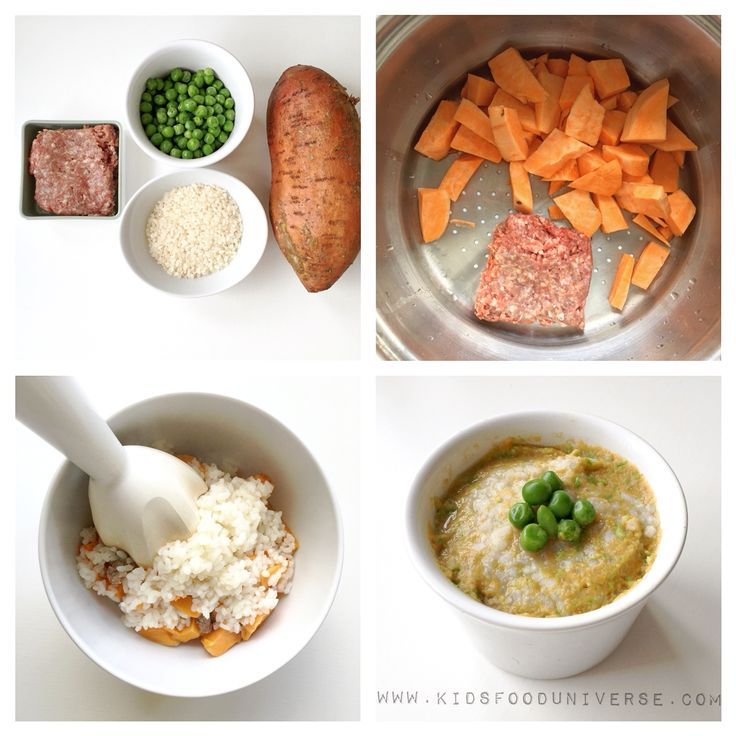 You do you! Either way, the puree recipes on this site will be delicious.
You do you! Either way, the puree recipes on this site will be delicious.
Top Spices to Add to Baby’s Puree
- Cinnamon
- Cloves
- Nutmeg
- Basil
- Mint
- Parsley
- Mild Curry Powder
- Fresh Lemon Juice
- Garlic
- Rosemary
Every recipe below has specific instructions on how to store that particular puree, but these are the general guidelines.
How to Freeze Baby FoodYour freezer is about to become your new best friend, allowing you to keep several weeks’ worth of baby purees at the ready. Whenever you make a puree, put several ounces in the fridge for your little one to enjoy that week, then freeze the rest of the batch for your baby to eat at a later date. Please make sure you get it in the puree into the fridge or freezer within 1 hour of cooking to prevent bacteria growth.
- Make a puree.
- Let it cool slightly.
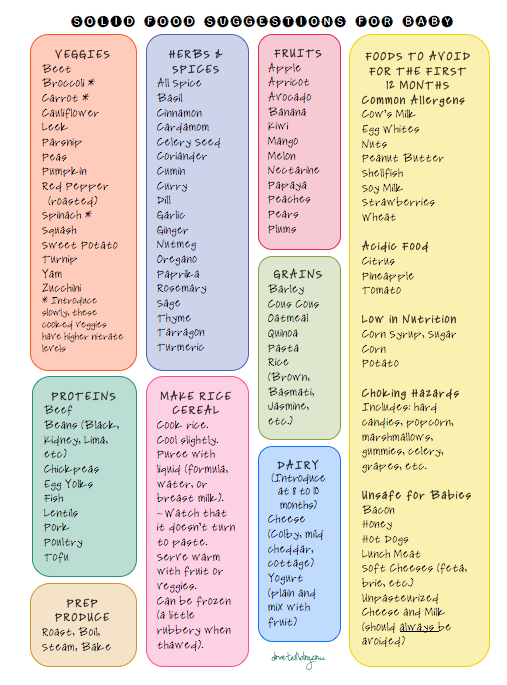
- Transfer the puree to freezer trays or freezer jars.
- Cover the freezer trays with a lid or plastic wrap.
- Label with date and name of puree.
- Place the tray in the freezer.
- Let it freeze for at least 5 hours.
- Take the tray out of the freezer.
- Crack the purees out of the trays.
- Place the frozen purees into zip-lock baggies or stasher bags.
How to Store Baby Food
Purees can be stored for up to four days in an airtight container in the fridge or 4 months in the freezer.
How to Thaw Baby Food
Thawing may seem like a no-brainer, but it never hurts to know your options. There are three different ways to thaw purees.
Microwave- Take the frozen puree cubes that you want to serve out of your freezer.
- Place them in a glass microwave-safe container.
- Microwave in 20-second increments, stirring every time.
- The puree is ready when it is just warm to your touch.

- Grab two clean spoons, one for you and one for your baby, and test your puree before serving.
Heating Tip: To prevent the microwave from unevenly heating the puree, which can leave it with cold and really hot spots and can burn your baby’s mouth, make sure you stir between each interval and taste test it before serving to your baby.
Refrigerator
This one takes the longest time, but it is an excellent alternative to using a microwave.
- Take the frozen puree cubes you want to serve out of your freezer.
- Place the cubes in an air-tight glass container.
- Place the container in the fridge and let the cubes thaw for 8 to 12 hours, usually overnight.
- Do not leave the puree in the container to thaw on the counter or anywhere out of the fridge, as bacteria will start to grow at a rapid rate — which is definitely not recommended.
- Note that the puree will be cold but thawed. So if your baby likes their puree warmed, you’ll have to finish the job using the microwave or stovetop method.

- In a small saucepan, add the frozen puree cubes you want to serve to your baby.
- Over medium-low heat, gently cook the puree until warm, stirring occasionally.
Thawing Tip: Some infants like their puree cold, warm, or really warm, and some will eat it no matter the temperature. You will get to know your baby’s personal preferences as the two of you bond over food.
Feeding Tips
- Make sure baby is showing readiness signs for eating – good control of their head and trunk, sitting with minimal assistance, bringing hands or toys to their mouth, and appearing interested in your food when you’re eating.
- Follow your baby’s lead – when feeding purees from a spoon, sometimes there’s a tendency to keep offering bites past the point of your baby being full. Always follow your baby’s cues for when they are done eating. Turning away from the spoon, closing her mouth, or pushing food away are all signs that your baby is finished with the meal.

- Throwing spoons – is a common phase that all babies go through at one point or another. One of the best ways to handle spoon throwing is to ignore it and keep feeding your baby as usual (with an extra spoon you already have at the table). If your baby ends up also throwing back up spoons #2 AND #3, simply encourage your baby to eat with their hands until they appear to be finished with the meal.
Top Rated Baby Food Purees
Pea Baby Puree (Stage One)
4.91 stars (85 ratings)
A delicious way to introduce peas to baby. Mild peas paired with a fresh hint of mint – a mouth-watering combo!
Get the recipe
Apples Baby Food Puree
4.77 stars (60 ratings)
This Apple Baby Puree recipe is a wonderful first food for baby! A delicious nutrient-dense puree that baby will go gaga over!
Get the recipe
The Best Sweet Potato Baby Food
5 stars (61 ratings)
This Homemade Sweet Potato with Curry Baby Food Puree is a fun and exotic first puree for baby! Great for 4+ months and is completely freezer-friendly!
Get the recipe
Broccoli Baby Food
4.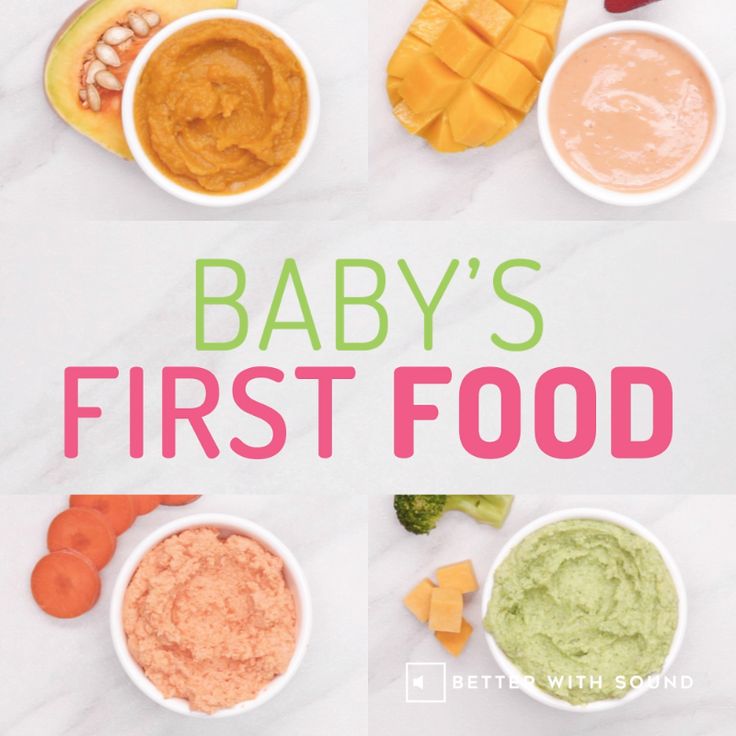 82 stars (75 ratings)
82 stars (75 ratings)
This Broccoli Baby Food with olive oil recipe is a great way to introduce healthy green vegetables into your baby's diet. A delicious puree full of essential vitamins and healthy fats for growing baby
Get the recipe
Oatmeal for Babies (Stage One)
5 stars (41 ratings)
This Oatmeal Recipe for Baby is made with simple nutrient-dense ingredients in less than 10 minutes, and it's perfect for baby's first bite or added into their favorite fruit or veggie puree. Great for 4+ months and up.
Get the recipe
Avocado for Baby – Puree & BLW
5 stars (16 ratings)
Avocados are a superfood and great first food for babies 6 months and up. Serve them pureed, smashed, or as a finger food for baby-led weaning.
Get the recipe
WeeSprout Baby Food Freezer Tray
My all-time favorite freezer tray! Individual servings pop out easily.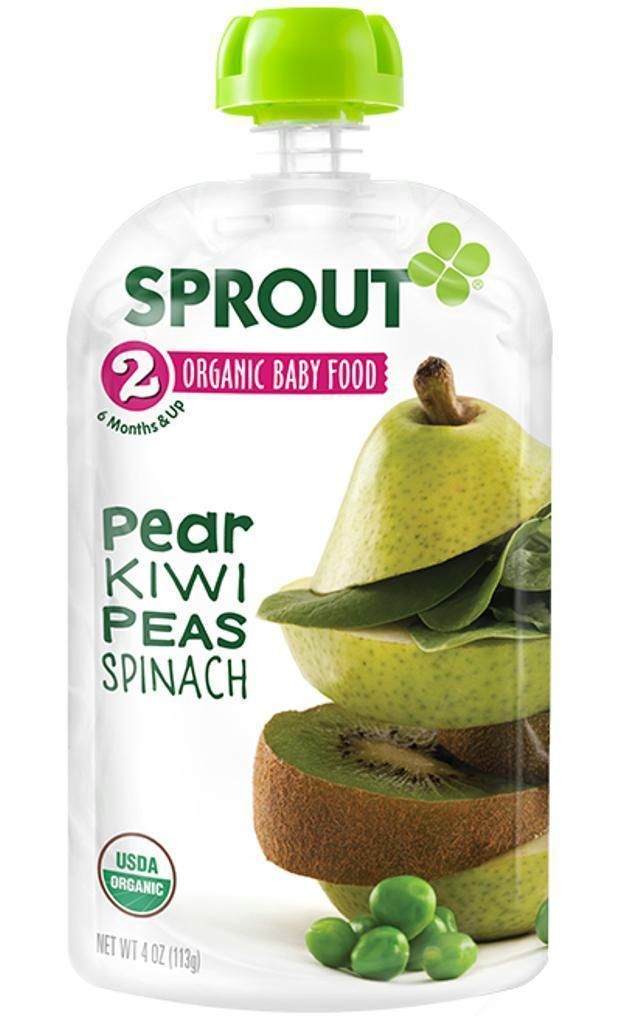 The hard plastic lid snaps on with ease and allows for convenient stacking of freezer trays. Dishwasher safe!
The hard plastic lid snaps on with ease and allows for convenient stacking of freezer trays. Dishwasher safe!
View Product
Butternut Squash Baby Food
5 stars (32 ratings)
This homemade Roasted Butternut Squash Baby Food Puree not only contains calcium, folate, vitamins A and C and fiber but it is also a deliciously smooth way to introduce butternut squash to your baby!
Get the recipe
Green Bean Baby Food
5 stars (35 ratings)
Green beans are steamed until just tender, this puree has a mild taste for baby's palette.
Get the recipe
Creamy Mango-licious Baby Food Puree
4.87 stars (30 ratings)
This 5-minute Mango Baby Food Puree is a great way to introduce baby to the magical taste of one of the world's healthiest fruits – MANGOS!
Get the recipe
Pear Baby Puree (Stage One)
5 stars (22 ratings)
This smooth and creamy homemade Pear Baby Puree is a wonderful first puree for baby – easy on the taste buds and great for their growing bodies!
Get the recipe
Peach Baby Puree (Stage One)
5 stars (16 ratings)
Smooth and creamy, this homemade Peach Baby Puree delivers big on taste with naturally sweetened peaches and flecks of vanilla bean.
Get the recipe
Basic Chicken Baby Food
4.43 stars (202 ratings)
This homemade Basic Chicken Baby Food is a great puree to add to any of your baby’s favorite fruit or veggie purees. Great for extra protein and flavor!
Get the recipe
Homemade Baby Rice Cereal
4.89 stars (52 ratings)
Using only 1-ingredient, this Homemade Baby Rice Cereal is a simple and easy recipe to make baby!
Get the recipe
Red Pepper Baby Puree
4.88 stars (33 ratings)
This Red Pepper Baby Puree recipe is a smooth, creamy and naturally sweet puree that is loaded with vitamin A, B6 and C. Great for 4+ months and older (or stage 1 puree).
Get the recipe
More Baby Fooe Purees
- Strawberry Baby Puree
- Blueberry Baby Puree
- Pumpkin Baby Puree
- Rasberry Baby Food
- Banana Puree
- Homemade Quinoa Baby Cereal
Or watch the shortened video here.
Pea Baby Food Puree
- 2 cups peas, fresh or frozen
- 1 medium zucchini, roughly chopped (optional)
- 4 mint leaves, roughly chopped (optional)
Sweet Potato Baby Food Puree
- 2 large sweet potatoes
- 1/4 tsp mild curry powder (optional)
- 1/4-1 cup liquid, (water, fresh breast milk, formula or sodium-free chicken stock) for pureeing
Roasted Banana Puree
- 4 bananas, cut lengthwise
- 1/8 tsp fresh rosemary, finely chopped (optional)
Carrot Baby Food Puree
- 2 pounds carrots, trimmed, peeled and roughly chopped
- 1/4 tsp nutmeg (optional)
- 1/2-1 cup liquid, (water, reserved water, fresh breast milk, formula or low-sodium stock) for pureeing
Apples Baby Food Puree
- 6 apples, peeled, cored and chopped
- 1/2 cup water
- 1/4 tsp cinnamon (optional)
Broccoli Baby Food Puree
- 2 cups broccoli, chopped into small florets
- 1 small white potato, apple or pear, peeled and roughly chopped, roughly 1/2 cup (optional)
- 1 tbsp good quality olive oil (optional)
Butternut Squash Baby Puree
- 1 butternut squash
- 1 tsp fresh thyme, roughly chopped (optional)
- 1-2 tsp olive oil (optional)
- 1/2-1 cup liquid (water, fresh breast milk, formula, low or no-sodium stock or bone broth), for pureeing
Green Bean Baby Food Puree
- 1 pound green beans, fresh or frozen, trimmed
- 1 big pinch fresh basil, cilantro or parsley, finely chopped (optional)
Creamy Mango-licious Baby Food Puree
- 2 cups fresh or frozen mango, deseed, peeled and roughly chopped.
 If using frozen mangos, thaw first
If using frozen mangos, thaw first - 1 medium banana (optional)
- 1 pinch nutmeg (optional)
Pear Baby Food Puree
- 6 pears, peeled and roughly chopped
- 1/8 tsp cardamom or cinnamon (optional)
- 1/4 cup water
Peach Baby Puree
- 3 fresh peaches or 12oz frozen peaches, do not thaw frozen peaches – use frozen
- 1/4 cup water
- 1/2 tsp vanilla bean pod (optional)
- 1 pinch pinch nutmeg (optional)
Basic Chicken Baby Puree
- 1 8-ounce boneless skinless chicken breast or thighs, cubed
- 1 cups chicken or veggie stock, low-sodium or sodium-free
- 1 tsp dried parsley (optional)
Homemade Baby Rice Cereal
- 1 cup brown rice, I prefer organic short grain
- 2 cups water for cooking
- 1-2 cups of liquid for blending, (water, fresh breastmilk or formula)
Red Pepper Baby Puree
- 2 red bell peppers, deseeded and roughly chopped
- 1/2 cup white potato, apple or pear, peeled and roughly chopped
Oatmeal for Babies
- 2 cup water
- 1 cup old fashioned oats
- 1/2 tsp chia seeds (optional)
- 1/2 tsp hemp seeds (optional)
Avocado for Baby
- 1/4 avocado
- 1 tsp breast milk, formula or water
Pea Baby Food Puree
In a medium saucepan, bring 2″ of water to a boil over medium heat.
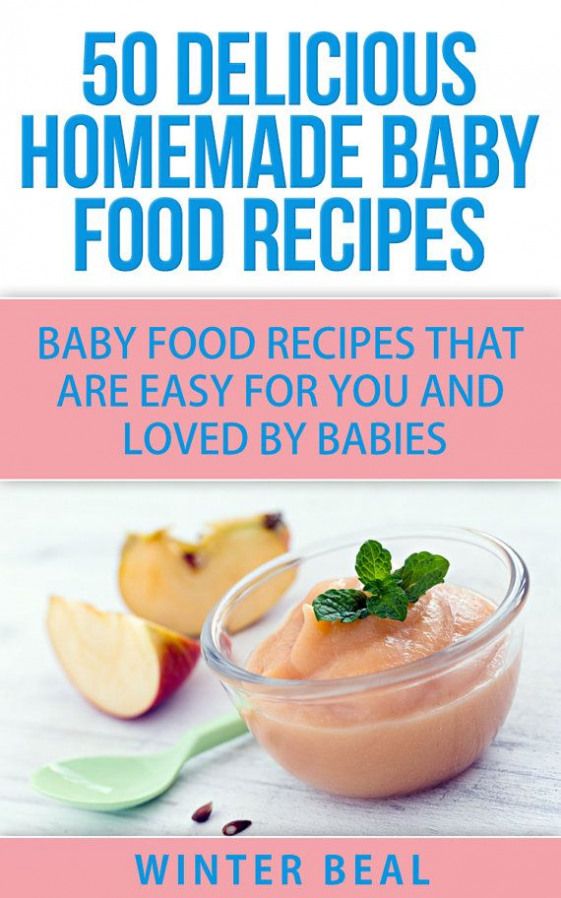 Place the zucchini in a steamer basket, and place over boiling water. Cover and steam for 5 minutes.
Place the zucchini in a steamer basket, and place over boiling water. Cover and steam for 5 minutes.Add in the peas, and steam for an additional 3-5 minutes. Reserve steamer water. Let cool slightly.
Add the zucchini, peas and mint leaves to a blender or food processor and puree for 1 minute or until you have achieved the desired texture. If the puree is too thick, add in 1/4 cup of the reserved steamer water until you have the right consistency.
Note on Zucchini: while this is a 2 vegetable starter puree, zucchini allergies are very low, so I added it to this recipe to give the peas a mild taste and smoother texture. You can completely leave them out if you prefer. Just steam the peas as directed.
Sweet Potato Baby Food Puree
Heat oven to 400°. Line baking sheet with tin foil, parchment paper or a silicone mat.
Wash and dry the sweet potatoes.
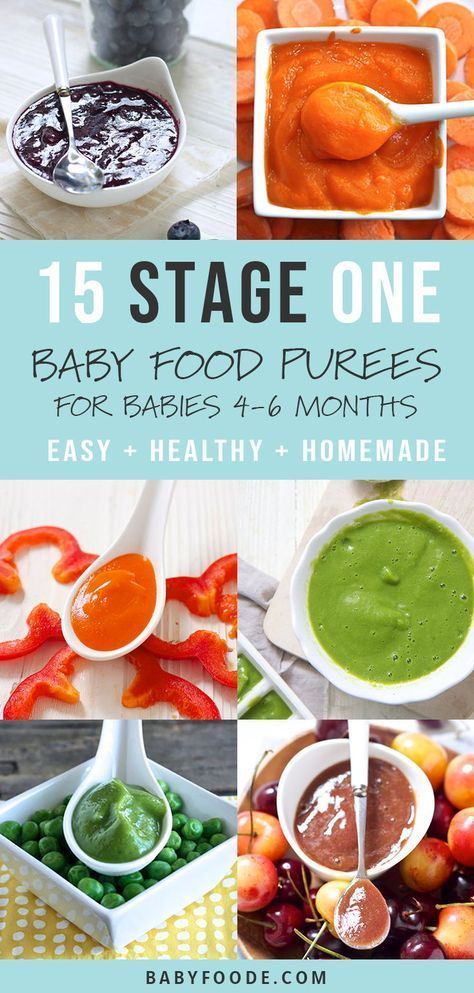 Prick with a fork in several places and then place the sweet potatoes on the baking sheet. Bake for 45 minutes – 1 hour or until a fork can easily prick the sweet potato. Let sit until cool to touch.
Prick with a fork in several places and then place the sweet potatoes on the baking sheet. Bake for 45 minutes – 1 hour or until a fork can easily prick the sweet potato. Let sit until cool to touch.Make a cut into the skin of the potato lengthwise and peel away the skin of the potato. Scoop out the sweet potato meat and place into a blender or food processor, adding in the mild curry powder and water.
Puree on high for 1-2 minutes or until smooth, adding in additional liquid in 1/4 cup increments if needed. I had to add in 1 cup of water to the puree pictured. Serve or freeze for a later meal.
Additional Spices: Feel free to use the following spices instead of the curry – 1/2 tsp of cumin, 1/4 tsp of nutmeg, 1/2 tsp of cloves, 1 fresh garlic clove, 1/2 tsp of chopped fresh thyme, 3-4 basil leaves, 1/2 tsp chopped rosemary or even a big pinch of fresh ginger or 1/2 tsp ginger powder.
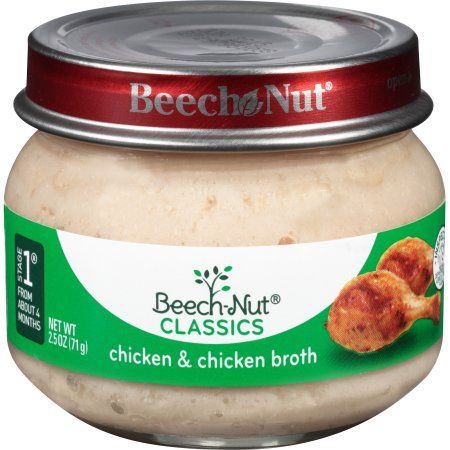 Or you can leave out the spices altogether.
Or you can leave out the spices altogether.
Roasted Banana Baby Puree
Heat oven to 325 degrees F. Line baking sheet with parchment paper.
Place bananas on a baking sheet and roast for 10-12 minutes or until golden brown. Let cool slightly.
Place bananas and rosemary into a blender or food processor and puree for 1-2 minutes or until completely smooth. You may need to add additional water, so start by adding in 1/4 cup increments until you get the desired consistency.
Additional Spices: This recipe is also great with 1 tsp cinnamon, 1/2 tsp cloves, 1/2 tsp nutmeg, or for a fun twist, 1/2 tsp mild curry.
Note on Bananas: while any ripeness of bananas will work, I have found that the bananas that are ripe to very ripe tend to work best in this recipe.
Carrot Baby Food Puree
In a medium saucepan, bring 2″ of water to a boil over medium heat.

Place the carrots into a steamer basket, cover and cook for 9-11 minutes or until tender. Reserve steamer water. Let cool slightly.
Place the carrots, nutmeg and 1/2 cup of liquid into a blender or food processor and puree for 1-2 minutes on high, adding 1/4 cup liquid at a time until you achieve the desired consistency. Serve and enjoy, or freeze for later.
Notes on Nutmeg: adding in spices to babies first purees are completely optional, but totally safe. Nutmeg rounds out the acidic taste carrots sometimes have and make this puree taste grounded and full-bodied.
Additional Spices: Feel free to substitute 1/2 tsp ginger powder or 1/4 fresh ginger, 1/2 tsp mild curry powder, 1/4 tsp cloves, 1/2 tsp finely minced fresh chives or 1/2 garlic clove instead of the nutmeg.
Apples Baby Food Puree
In a medium saucepan, place the apples, water and cinnamon.
 Cover and heat on medium-low for 15-20 minutes or until apples are tender. Let cool slightly.
Cover and heat on medium-low for 15-20 minutes or until apples are tender. Let cool slightly.Transfer all of the ingredients into a blender or food processor and blend for 1-2 minutes or until completely smooth. For a chunky puree, quickly pulse the ingredients 10-15 times or until you receive your desired consistency. Serve or freeze for later.
Additional Spices: Feel free to sub in these spices instead of the cinnamon for this recipe – 1/8 tsp of cloves, 1/8 tsp of nutmeg, 1-2 leaves of fresh mint, 1-2 leaves of fresh basil, a pinch of fresh or 1/4 tsp of ginger powder or even 1/4 of coriander for a fun twist.
Apples: you can use any sweet apple in this recipe – Gala, Honeycrisp, Fuji, McIntosh, etc.
Broccoli Baby Food Puree
In a medium saucepan, bring 2 inches of water to a boil over medium heat. Place the broccoli and potato (or apple/pear) into a steamer basket and place over boiling water, cover and steam for 10-12 minutes or until the broccoli and potato are tender.
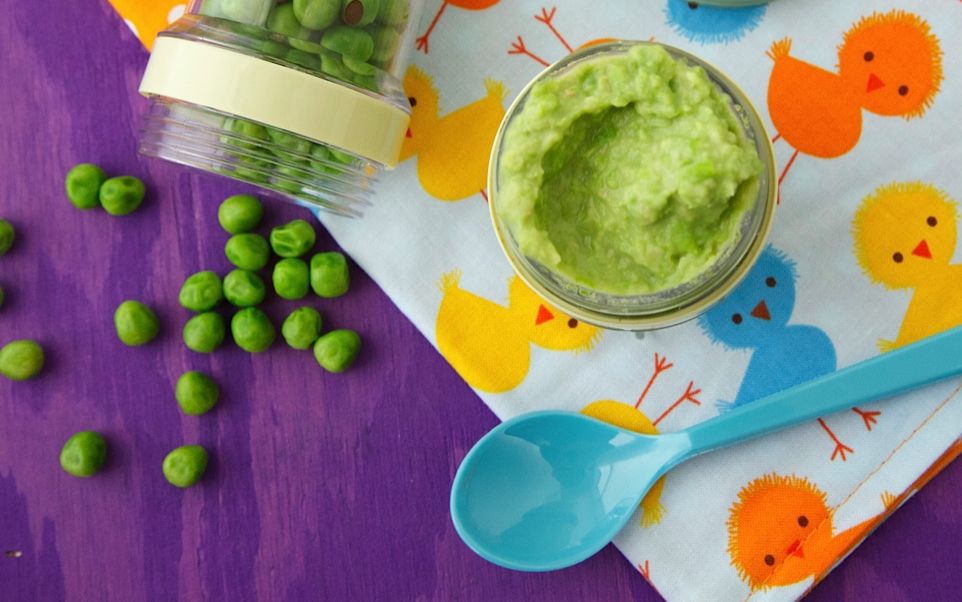 Reserve water from the steamer. Let cool slightly.
Reserve water from the steamer. Let cool slightly.Add the broccoli, potato and olive oil into a blender or food processor and puree until smooth, adding the reserved water from the steamer basket in 1/4 cup increments if needed.
Adding In Spices: Feel free to add in 1 tsp of chopped chives, 2-3 mint leaves, 1 tsp of chopped cilantro, 1/2 tsp cumin or a squeeze of fresh lemon juice.
Butternut Squash Baby Puree
Heat oven to 450 degrees F. Line baking sheet with a silicone mat, tin foil or parchment paper.
Cut butternut squash in half, deseed and place flesh side up, skin side down. Optional – Feel free to drizzle the squash with 1-2 teaspoons of olive oil for some added healthy fat.
Bake for 45 minutes or until you can easily prick the squash with a fork. Let cool until you can handle the squash with your hands.
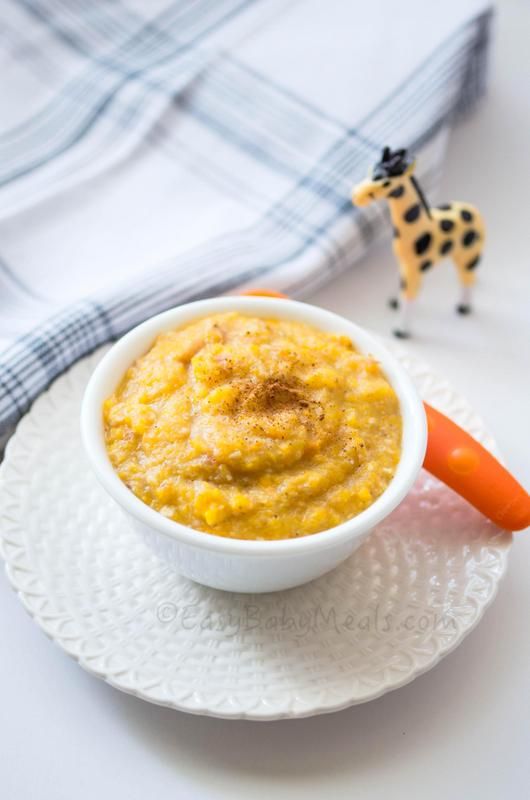
Scrape off the skin and discard. Place the butternut squash into a blender or food processor. Add thyme and puree for 1-2 minutes, adding water in 1/4 cup increments until you have your desired consistency. I had to add 3/4 cup of water to my puree shown below.
Additional Spices: Feel free to sub the thyme for 4 basil leaves, 1 tsp chopped rosemary, 1 tsp ginger powder, or 1 big pinch of fresh ginger, 1/2 teaspoon nutmeg, or even 1/2 tsp of coriander.
Green Bean Baby Food Puree
Fill a medium saucepan with 2” of water and bring to boil over medium heat. Place the green beans (fresh or frozen) into a steamer basket over the boiling water, cover, and cook for 10 minutes or until tender. Let cool slightly. Reserve steamer water.
Transfer the green beans and herb to a blender or food processor and puree for 1-2 minutes or until smooth, adding reserved steamer water in 1/4 cup increments if needed until you reach your desired consistency.

Adding Spices: you can add a big pinch of roughly chopped basil, cilantro, mint, parsley, or chives to this puree before blending.
Creamy Mango-licious Baby Food Puree
Place the mango, banana and nutmeg (if using) into a blender or food processor. Puree for 1 minute or until completely smooth. If your mango is not ripe enough, you might need to add in up to 1/4 cup of water while blending to get the right consistency. Serve or freeze for later.
Mango Tip: I usually find that organic frozen mangos are easier and cheaper to find than fresh organic mangos, but if mangos are in season when you are making this recipe, by all means, you can use fresh over frozen. For fresh mangos, simply peel and chop.
Pear Baby Food Puree
In a medium saucepan, place the pears, cardamon and water, cover and heat on medium-low heat for 10-15 minutes, or until tender.
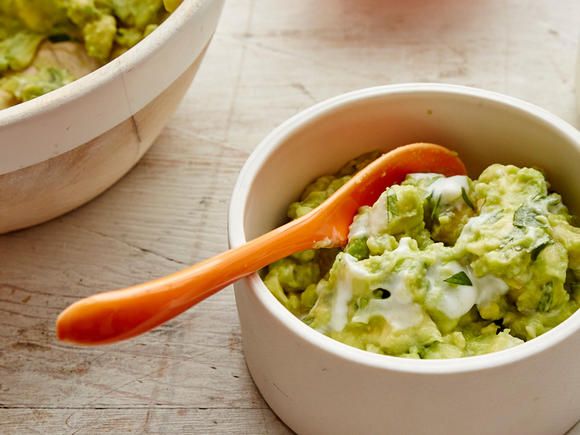 Let cool slightly.
Let cool slightly.Using a slotted spoon, scoop the pears out of the saucepan, leaving water behind, and into a blender or food processor. Blend for 1-2 minutes until you have your desired consistency. If your pear puree is too thick, add the leftover cooking water in 1/4 cup increments.
Peach Baby Puree
If using fresh peaches, peel, pit and slice the peaches. If using the fresh vanilla bean pod, cut in half and then slice open lengthwise. Take the back of your knife or spoon and scrape out all of the vanilla bean, reserve.
In a medium saucepan, add the peaches and water, cook over medium-low heat for 5 minutes (fresh peaches) – 10 minutes (frozen peaches). Right before the peaches are done cooking, add in the vanilla and nutmeg (or any other spices you prefer) and stir until incorporated—Cook for 1 more minute.
Using a slotted spoon, transfer the peaches to a blender or food processor, leaving all excess water in the saucepan.
 You do not want to add any additional liquids, or the puree might be too thin. Starting on low and increasing to high speed, puree the peaches until smooth and creamy. Serve to baby or freeze for later.
You do not want to add any additional liquids, or the puree might be too thin. Starting on low and increasing to high speed, puree the peaches until smooth and creamy. Serve to baby or freeze for later.
Basic Chicken Baby Puree
In a medium saucepan, bring the cubed chicken, broth, and parsley to a boil over medium heat. Turn the heat down to low and simmer, covered, for 15 minutes or until chicken is just cooked through. Let cool slightly.
Using a slotted spoon, transfer the chicken to a blender or food processor, leaving the broth in the saucepan. Reserve the broth.
Starting on low and working your way up to high-speed, puree the chicken until you reach your desired consistency, adding in broth in 1/4 cup increments if needed. I had to add in just 1/4 cup of broth to get the consistency seen in this photo.
Extra Healthy Fat: For some extra healthy fat, this puree is also wonderful, with a teaspoon of grass-fed butter (salt-free) added to the blender right before pureeing.

Homemade Baby Rice Cereal
IMPORTANT STEP: Place the rice in a fine-mesh colander and rinse with water until the water runs clear.
Transfer the rice to a medium saucepan and add 2 cups of water. Bring to a boil over high heat, then reduce heat to low, cover with a lid and simmer for 35-45 minutes or until the rice is tender and the water is evaporated. Each batch of rice cooks a little differently, so taste at 35 minutes to see if the rice is tender. Remove the saucepan from the heat and let rest for 10 minutes, covered. If using fresh breast milk or formula for blending, I would remove the lid and let the rice cool for 15 minutes.
Place the rice into a blender or food processor and add 1/2 cup of liquid of choice. Blend for 1-2 minutes on medium-high speed until completely smooth and creamy, adding in the additional liquid in 1/4 cup increments, if needed, until you have your desired consistency.
Red Pepper Baby Puree
In a medium saucepan, bring 2″ of water to a boil.
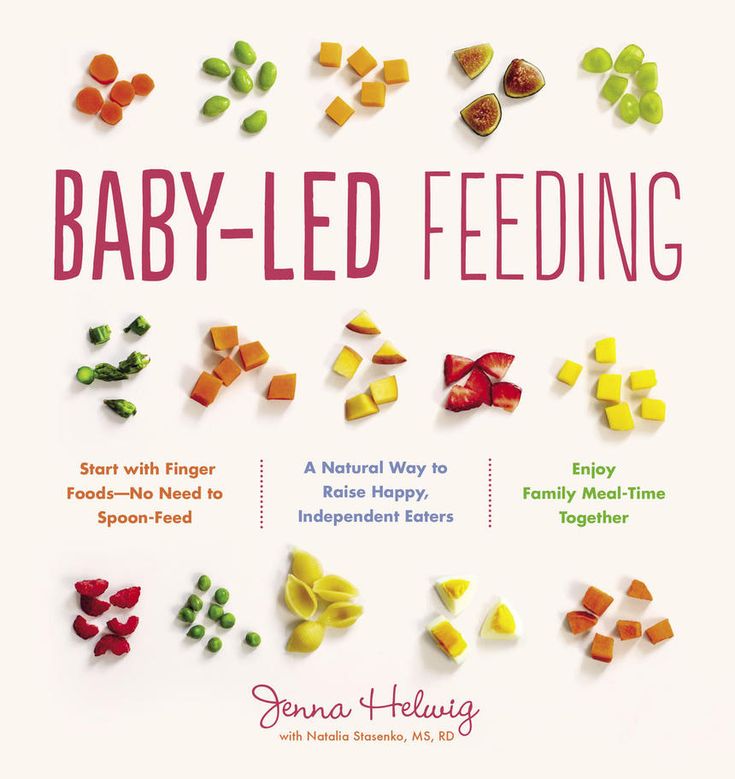
If using a potato: place it in a steamer basket and steam for 10 minutes before adding peppers, and cooking for another 5-7 minutes.
If using pear or apple: add in the red peppers and apple or pear and steam for 5-7 minutes or until tender. Reserve steamer water. Let cool slightly.
Add in all of the ingredients into a blender or food processor and puree for 1 minute or until completely smooth, adding in a tablespoon of water at a time if needed.
Oatmeal for Babies
In a medium saucepan, bring 2 cups of water to a boil. Add in 1 cup of old-fashioned oats along with the chia seeds, hemp seeds and any spices you are using. Turn down the heat to medium-low and cook the oats for 5 minutes, stirring occasionally, or until all of the water is gone and the oats are soft. Let cool slightly.
Transfer the oats to a blender or food processor and puree for 1-2 minutes, adding water in 1/4 cup increments if needed, until completely smooth.
 I had to add 1/2 cup of water to my oatmeal. You will want the oat cereal to be on the thinner side, so it doesn't become sticky. The oats will continue to absorb liquid as they cool, so you can add more water, fresh breast milk, or formula as needed. Serve to baby or freeze for later.
I had to add 1/2 cup of water to my oatmeal. You will want the oat cereal to be on the thinner side, so it doesn't become sticky. The oats will continue to absorb liquid as they cool, so you can add more water, fresh breast milk, or formula as needed. Serve to baby or freeze for later. Type of Oats: This recipe is for old-fashioned oats: for steel-cut or instant oats, read the full post.
Adding Spices: you can add a big pinch of cinnamon or pumpkin pie spice mix or a smaller pinch of nutmeg or cloves to these oats before blending.
Chia and Hemp Seeds: are added for a nutritional boost, but you can add or omit them if you prefer. You can get both of these at any health food store or online here (chia/hemp).
Avocado for Baby
Age: 4-6 months and up
Yield: roughly 15-25 ounces, depending on the recipe
Freezer Tray
Bumkins Baby Bowl
Blender
Saucepan
Did you make this recipe?
Tag @babyfoode on Instagram and hashtag it #babyfoode!
Pin Recipe Email a Friend
Homemade baby food and puree recipes
- Community
- Getting Pregnant
- Pregnancy
- Baby names
- Baby
- Toddler
- Child
- Health
- Family
- Courses
- Registry Builder
- Baby Products
Advertisement
Photo credit: Thayer Allyson Gowdy for BabyCenter
Once your baby starts eating solid food, a whole new world opens up for them. Whether you're going the traditional spoon-feeding route or trying baby-led weaning, you're likely starving for ideas for what to feed your baby. Making your own baby food can seem daunting, but with a little planning, it's super easy – and it can be cheaper than buying prepared baby food.
Whether you're going the traditional spoon-feeding route or trying baby-led weaning, you're likely starving for ideas for what to feed your baby. Making your own baby food can seem daunting, but with a little planning, it's super easy – and it can be cheaper than buying prepared baby food.
From thin purees to full finger-food meals, here are some baby food recipes for every stage of your solid feeding journey.
Photo credit: Thayer Allyson Gowdy for BabyCenter
Baby food recipes for 6 to 8 months
Babies are typically ready to start eating solid foods around 6 months. Signs that they're ready include having good head control, being able to sit up, and showing an interest in food. If your baby watches you while you eat, opens their mouth when you offer them a spoonful of food, or even tries to grab food off your plate, those are good indicators that they're ready.
You can start your baby off with just about any pureed, single-ingredient food – like bananas, berries, or many of the foods listed below.
The exceptions are the top allergenic foods, such as fish, wheat, eggs, soy, peanuts, tree nuts, sesame, and dairy. It's best to give your baby low-allergy foods at the very beginning, like apple or chicken puree. Once you know they can handle those foods, you can start introducing potentially allergenic foods.
When introducing your baby to a common allergen, serve it for three to five days before introducing another type of food. That way, if your baby has an allergic reaction, it'll be easier to tell what caused it.
Try these baby food recipes for your 6- to 8-month-old:
- Apple and pear sauce
- Baby oats with prunes
- Butternut squash puree
- Green pea puree
- Mango and banana puree
- Peach or nectarine puree
- Roasted pears
- Sweet potato puree
- Turkey or chicken puree
- Whipped cauliflower
- Yogurt and berry swirl
- Zucchini puree
Photo credit: BabyCenter
Baby food recipes for 9 to 12 months
By the time your baby is about 9 months old, they're ready for some more complex dishes – often, you'll find yourself feeding them whatever you and the rest of your family are eating.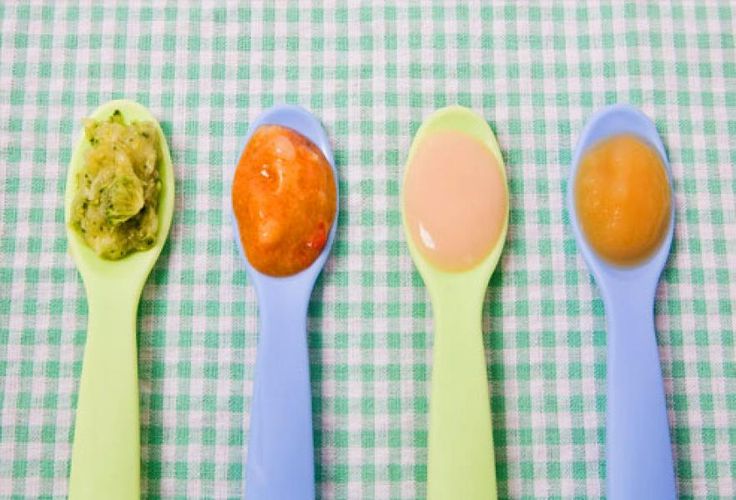
While you're expanding your baby's eating horizons, remember they still don't have that many teeth and can't chew hard or crunchy produce like raw carrots – and be on the lookout for choking hazards, like whole grapes and popcorn. But there are still plenty of other options for babies at this age: flaky salmon, ground beef, roasted vegetables, baked potatoes, pasta dishes… the list goes on.
If your baby doesn't like new textures, don't worry. The key at any age is to offer your baby a variety of foods and to keep trying. Even if they don't like the food at first, keep offering it to them – sometimes, you may have to offer your baby a food up to 20 times before they'll accept it.
By this age, your baby is also typically ready to start trying out finger foods, like O-shaped toasted oat cereal, banana slices, or well-cooked pasta cut into bite-size pieces, about a ¼ of an inch in size. Several of the recipes below, like guacamole, hummus, and whipped cauliflower, make perfect dips to pair with finger foods so your baby can start learning to eat independently.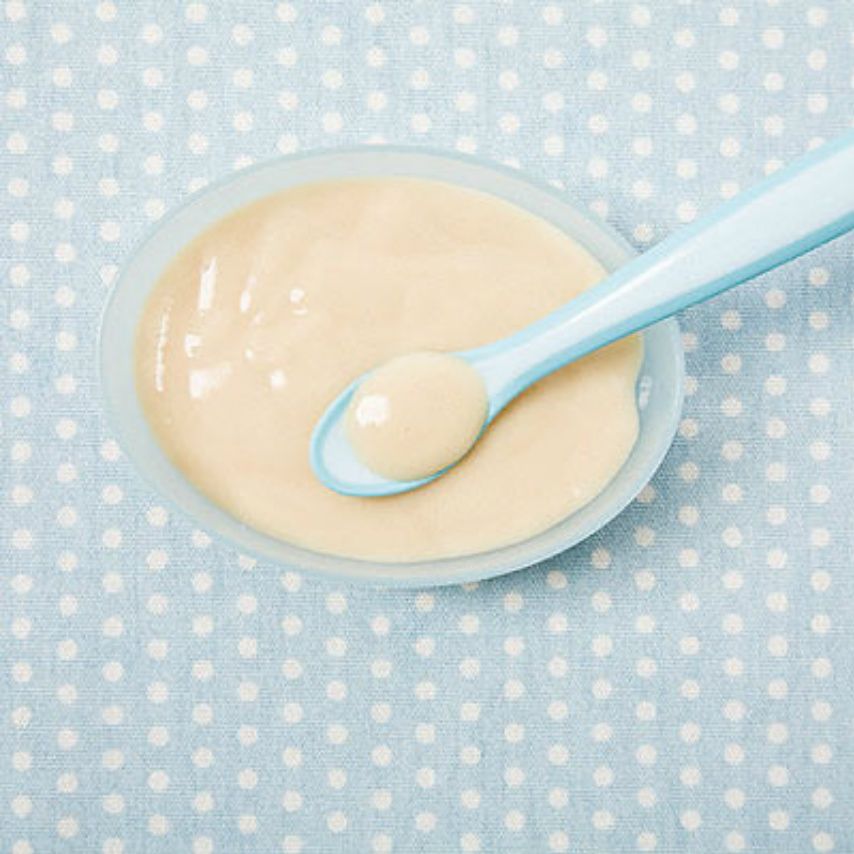 It'll be messy, of course, but it's a great time for them to practice their hand-eye coordination and skills with their newfound pincer grasp.
It'll be messy, of course, but it's a great time for them to practice their hand-eye coordination and skills with their newfound pincer grasp.
If you're ready for some more food adventures with your baby, try adding spices to their meals. While it isn't recommended to give babies added salt or sugar in their diet until they're at least 2 years old, fresh herbs and other spices are fair game (and a little added salt is okay). Try adding cinnamon to their oatmeal or rosemary to their ground beef.
And if you really want to experiment with new flavors, your baby may even enjoy a bit of spicy food – but avoid foods with a lot of added sugar, salt, or processing. (If you're a fan of spicy food yourself and ate it while breastfeeding, your baby might even have some built-in tolerance for spice.)
Try these recipes for your 9- to 12-month-old:
- Asparagus risotto
- Baby guacamole
- Barley and mushroom mash
- Broccoli and cauliflower cheese
- Chicken curry with green beans and zucchini
- Coconut milk rice pudding with blueberry compote
- Homemade hummus
- Lentil and spinach stew
- Pasta with spinach and ricotta
- Oatmeal with apples
- Quinoa, black beans, and corn
- Rice with peas, carrots, and egg
- Root veggie mash
- Salmon, asparagus, and peas
- Shepherd's pie
- Smashed chickpea and butternut squash chili
- Tomato and avocado scramble
- Tropical fruit salad
If you're ever unsure about what to feed your baby or how much food to give them at any age, check out our age-by-age guide to feeding.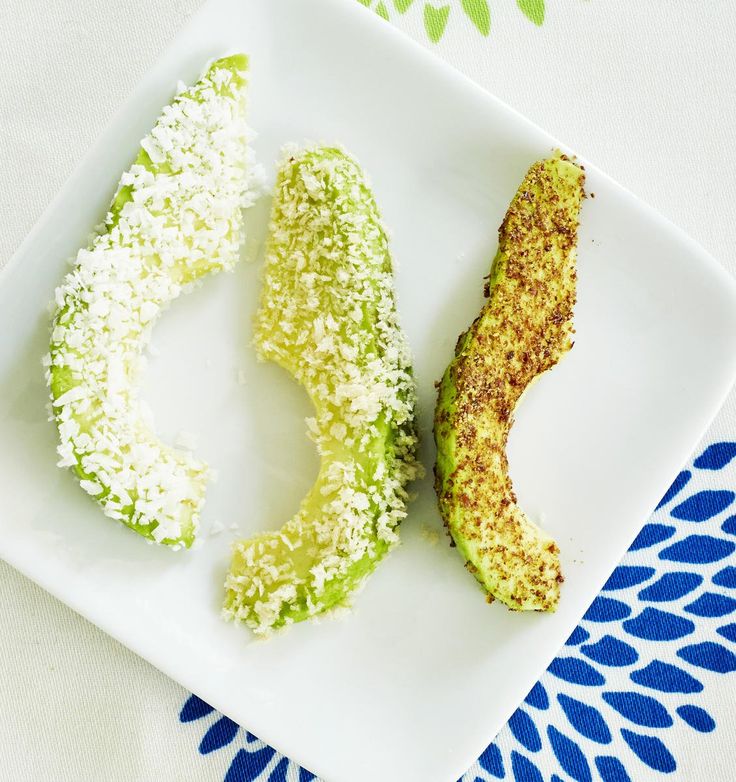
Was this article helpful?
Yes
No
Rebekah Wahlberg
Rebekah Wahlberg is an associate editor at BabyCenter, the world's number one digital parenting resource. She lives in Southern California with her silly dog Booger, where she enjoys hiking, yoga, and watching Netflix when she "should" be reading. Wahlberg is passionate about creating content that helps parents and parents-to-be equip themselves with everything they need to succeed.
Advertisement | page continues below
5 easy ways to transfer a child to an adult table: from mashed potatoes to pieces
How to transfer a child to an adult table, what are the rules for a healthy diet for a child after a year and how to teach a baby to chew: read about this and much more in our material.
Most often, by the age when grown-up babies have already learned to sit on their own, they show interest in the parent's table. Sometimes, with great zeal, they strive to try everything that is on the plate of their parents or brothers and sisters. And if they managed to get a trophy in the form of adult food, they not only try it “by the tooth”, but they can also smear it on the table or throw it on the floor.
And if they managed to get a trophy in the form of adult food, they not only try it “by the tooth”, but they can also smear it on the table or throw it on the floor.
And now there comes a moment when every parent dreamily thinks that soon there will be no need to prepare a “special menu” for the youngest member of the family and everyone will finally eat the same thing. But when does this time come?
When is the right time?
Experts agree that there are no clear boundaries, because every baby develops at its own pace. Coordinating the work of all the muscles of the oral cavity and chewing hard pieces can be still difficult for babies. At the first stage of acquaintance with complementary foods, it is better to use homogenized purees, then - products with a puree-like consistency, and later - with pieces. Often at 8-9months, children try to gnaw everything that gets into their mouths, and they usually already have several teeth, and all this suggests that the structure of food can be complicated. Let's see how.
Let's see how.
5 easy ways to transition your child to adult meals
1. Take it slow and encourage interest
Starting with mashed potatoes, slowly but steadily add thicker foods to your diet. At the age of 6 months (it all depends on the pace of development of your baby and his physiological characteristics, for example, on the number of teeth), you can safely treat children to special children's cookies.
It will also be useful to observe the food interest of the baby - to notice that he himself is drawn to some adult food.
Be sure to tell us about the taste, texture, color of the product.
Photo: shutterstock / Katrina Era2. Create a special atmosphere at the table
It is very important for kids to follow the routine - eat at the same time, do it in your own place and preferably with your children's appliances from your dishes, and, of course, in your chair. This disciplines, allows the gastrointestinal tract to work by the hour.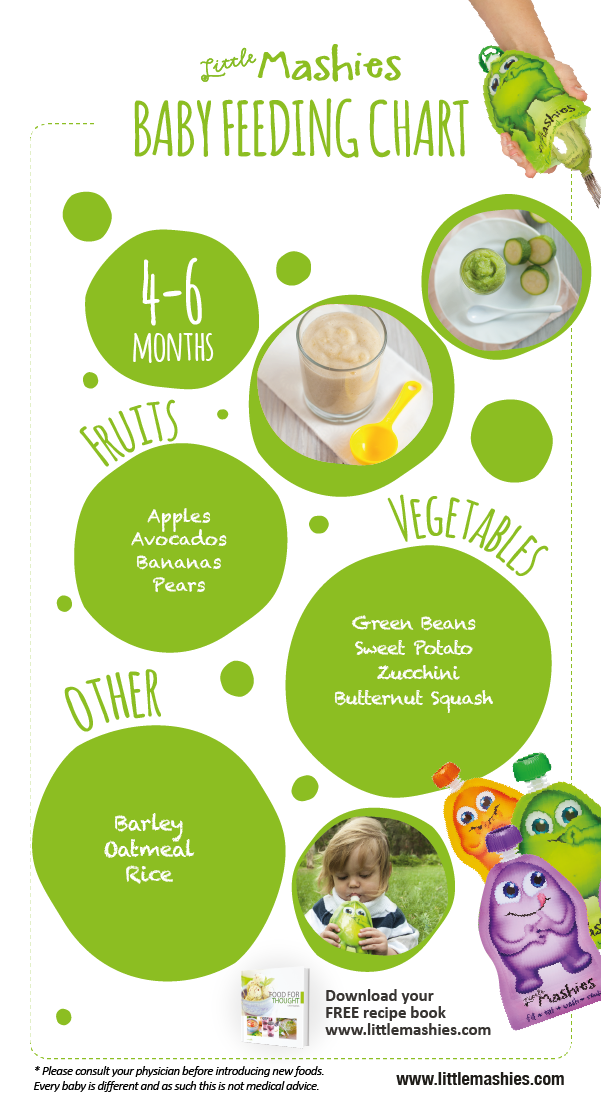
Baby chairs are ideal for feeding your baby. First of all, it is safe, but do not forget that the child must always be fastened. Show by your own example how to use cutlery, because kids repeat everything after adults.
Make family breakfasts, lunches or dinners (and conversations) a special time. Time at the table is the time of communication, let it be a good tradition and remain in the memory of the child.
3. Choose special products to transition to an adult table
During the transition to adult food, unfamiliar food may seem tasteless, the child may think that you are giving him something inedible. One of the best transition options would be a special combined puree, for example, the FrutoNyanya line with pieces of meat and vegetables, which will introduce the baby to a new consistency and help stimulate chewing skills due to the pieces of vegetables and crushed grains contained there. In addition, each jar of this line contains 12% of the physiological needs of the baby (aged 9months) in iron.
4. Cook meals that are suitable for the whole family
Cooking for the whole family is a great idea. The main rule: your diet should be suitable for the child, which means a minimum of salt and spices. Introduce baby vegetable "soups", boiled or steamed vegetables, lightly crushed with a blender or mashed with a fork, into the child's diet. You can give your child to try different foods with pieces. And if he doesn't like it, offer again in a couple of weeks. It is important here not to miss the moment, but also not to rush: if you start introducing thicker and solid foods into your baby’s diet too early, this can lead to eating disorders and other problems.
5. Avoid watching cartoons and using gadgets while eating
It is important to be patient and not distract your child with cartoons and gadgets. So he will be able to feel the taste of food and learn to enjoy the process of eating - both in the present and in the future. Of course, turning on the cartoon and quickly feeding the child is very convenient, but when the baby is fascinated by what is happening on the screen, his brain analyzes only the cartoon and does not think about the taste of food and satiety at all.
Of course, turning on the cartoon and quickly feeding the child is very convenient, but when the baby is fascinated by what is happening on the screen, his brain analyzes only the cartoon and does not think about the taste of food and satiety at all.
What happens if you miss the moment?
More and more mothers and fathers in parent groups on the Internet complain that their seemingly healthy child refuses to chew solid food. The reasons may be different - for example, "laziness" (kids do not want to chew, as at first this is not an easy process).
Delaying the introduction of more adult foods and foods with chunks too long can lead to a range of problems, from eating disorders to functional and even organic disorders. And, of course, the work of the gastrointestinal tract suffers.
The advice in the articles is advisory in nature and cannot replace a visit to your doctor.
Photo: shutterstock / BigLike Images
How to feed a child in the heat / 10 recipes for children's smoothies - an article from the "What to feed" section on Food.
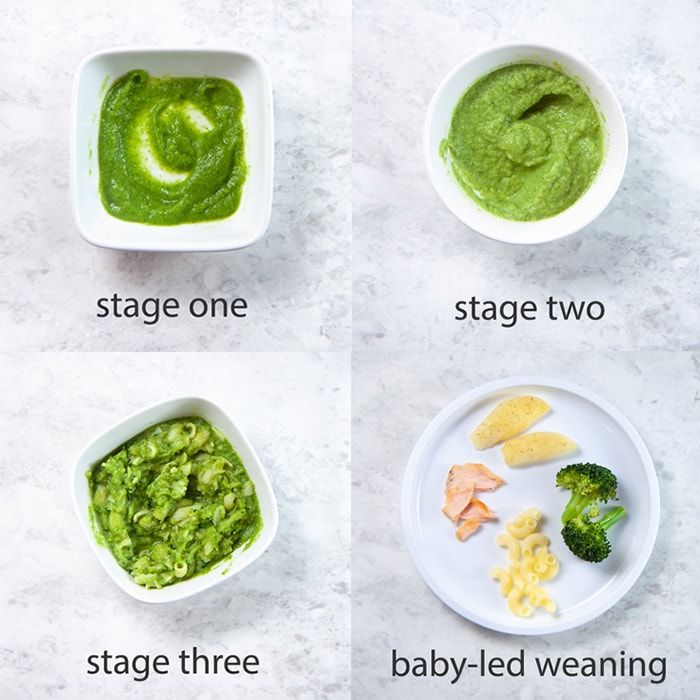 ru
ru A glass of smoothie may well replace a child's breakfast or afternoon snack if it there are proteins, and fats, and long carbohydrates. Mix half an avocado with kiwi, a handful of spinach, and a banana or strawberry. This drink is a good source of fats and carbohydrates. The protein component will help replenish the cottage cheese, if the child tolerates it well, or a special protein powder.
How many smoothies can you drink per day
In summer you can make smoothies every day. Threw proteins, berries, vegetables, fruits into a blender, mixed - and you can continue to do your own thing. The rest of the time, when children are inclined towards hot cereals or stews, smoothies should be given no more than two to three times a week.
Be aware that this is unprocessed food and may be too harsh on the baby's gastrointestinal tract. As a rule, the main berries and fruits appear in the diet of babies by 8-9months. Once an ingredient is in complementary foods, it can be added to smoothies.
It turns out that you are preparing fruit and berry puree for your child, just in a more liquid form. Similar to complementary foods, offer your baby a teaspoon of the drink first and gradually increase the serving.
Remember to include solid food in your child's diet every day. Too much smoothie craving can cause a child to be reluctant to chew.
What to cook with
Children's smoothies are not much different from those prepared by adults. True, you should avoid all caffeinated components, juices, spicy additives.
Remember, smoothies have a higher glycemic index than whole foods. Sugar and honey should not be added to the drink.
How to store
Smoothies should not be stored at all, but eaten immediately after preparation. For example, vitamin C is oxidized almost instantly. If the child does not drink the smoothie, pour the drink into a glass container, close tightly and refrigerate. There will still be less vitamins in such a drink, but the fiber will not go anywhere. Such a snack will be healthier than cookies.
Such a snack will be healthier than cookies.
10 healthy smoothie recipes
1. Banana, orange and cherry smoothie
Add natural sugar-free yogurt to the smoothie and pour into a beautiful glass. Invite your child to make smoothies with you. He will gladly drink a cocktail that he made himself.
2. Pineapple, apple and grapefruit smoothie
The fruit in the drink is a real vitamin bomb. Grapefruit is rich in vitamins C, E, group B, carotenoids, macro- and microelements, fruit acids and a large amount of pectins. Pineapple contains potassium, calcium, magnesium and phosphorus. Carrot juice can be prepared in a juicer or grated vegetable and squeezed through cheesecloth.
3. Smoothie with kefir and cottage cheese
This drink is served not in a glass, but in a deep plate. The composition is quite simple: cottage cheese is a source of slowly digesting casein protein, and kefir is one of the best probiotic foods. Additives can be berries, fruits, nuts, muesli, dried fruits, which are beautifully laid out on top of the dish.
4. "Puff" smoothie with kiwi, orange and strawberries
The peculiarity of this cocktail is the separation of ingredients by color: red, yellow, green. It is important to ensure that they are about the same consistency and do not mix in a glass when added. Serve the drink in a transparent container so that the child can immediately see what the “traffic light” will drink.
5. Beetroot smoothie
Not all children like beetroot, and beetroot is an important source of calcium, iron, magnesium, folic acid and potassium. In smoothies, beets are eaten with a bang. Banana can be substituted for peaches or pears if desired.
6. Smoothie with cottage cheese and oatmeal
This smoothie can be offered to a child instead of breakfast or dinner. It takes only 10 minutes to prepare, and the charge of vivacity will last until dinner. It is better not to add honey to the drink - the banana will give all the sweetness.
7. Smoothie with milk and strawberries
Strawberries contain a lot of vitamin C, ascorbic and folic acids, and iron.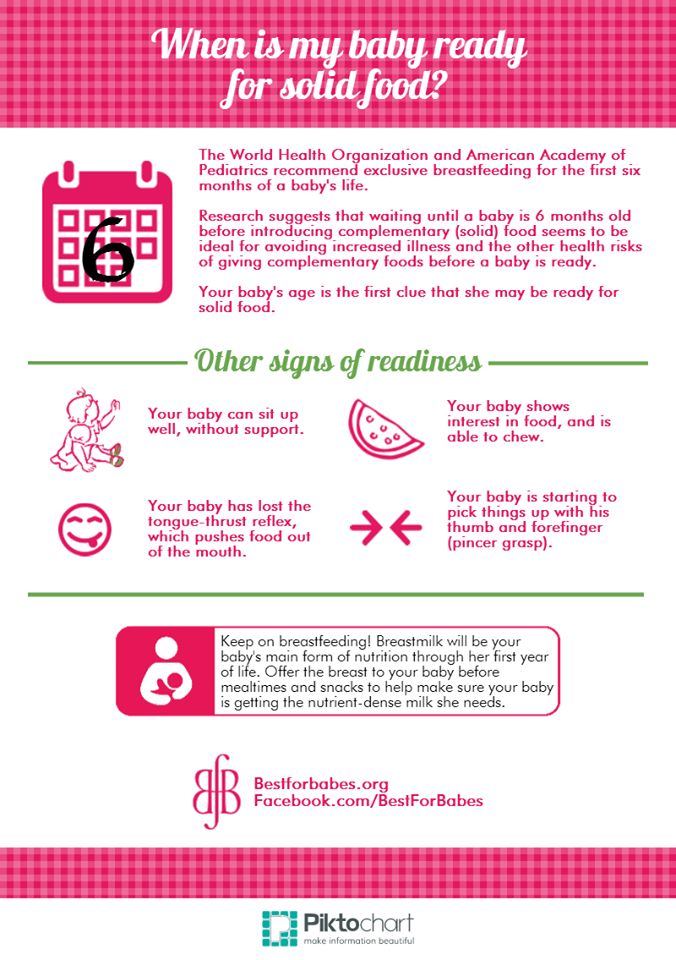 This berry is useful for the prevention of iron deficiency anemia. And, of course, it is very tasty. In a strawberry smoothie, you can add either milk if you want a thinner consistency, or yogurt - then the drink will be thicker.
This berry is useful for the prevention of iron deficiency anemia. And, of course, it is very tasty. In a strawberry smoothie, you can add either milk if you want a thinner consistency, or yogurt - then the drink will be thicker.
8. Fruit and avocado smoothie
Avocado is good for everyone: it contains a lot of potassium, healthy fats, fiber. But children do not really like this useful fruit. But almost all babies love the taste of apples and pears, these fruits are the first to appear in complementary foods and will perfectly disguise avocados.
9. Spinach Smoothie
Fresh spinach is rich in minerals, vitamins, phytonutrients and antioxidants. Children enjoy drinks with spinach mixed with apples, bananas and orange. You can dilute the cocktail with water or milk.
10. Smoothie with blueberries and raspberries
You can mix any berries in a berry smoothie: raspberries, blueberries, strawberries, etc. The main thing is to choose the most ripe and fresh fruits.

